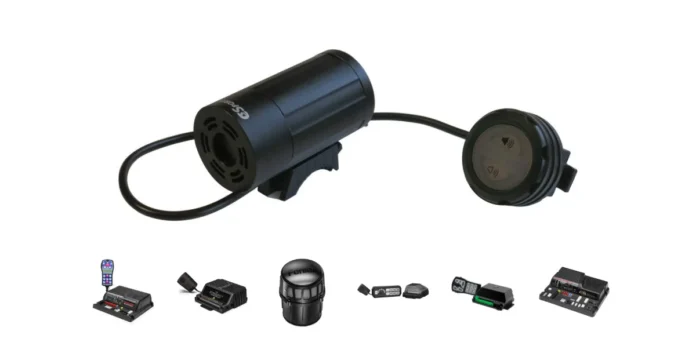Emergency vehicle lighting is a sophisticated communication system that extends beyond simple attention-getting devices. These intricate sequences of lights represent a complex visual language that first responders use to convey critical information about incident types, severity, and required responses.
Understanding this hidden language is essential for emergency personnel and the public they serve.
The Foundation of Visual Emergency Communication
Emergency light sequences form the backbone of rapid incident communication among first responders. These patterns transcend verbal communication, instantly recognizing the severity of the situation and the required actions. The impact on public safety remains significant, as these visual cues guide civilian responses and facilitate emergency vehicle movement through congested areas.
First responder coordination relies heavily on these predetermined light patterns. Teams arriving at incident scenes can quickly assess situation types and required responses based on the lighting sequences displayed by vehicles already present. This visual communication system proves particularly valuable when radio communication is compromised or impractical.
Understanding Basic Light Pattern Categories
Code 3 Response Patterns
Code 3 response patterns represent the highest level of emergency response. These sequences typically involve rapid alternating flashes between multiple light sources, creating maximum visibility and urgency. The pattern varies slightly between agencies but consistently maintains an attention-demanding rhythm that communicates the need for immediate civilian response.
Emergency vehicles operating under Code 3 conditions combine these distinctive light patterns with sirens to ensure maximum awareness. The sequence typically involves synchronized front and rear lighting elements, creating a 360-degree visibility envelope around the responding vehicle.
Scene Safety and Stationary Patterns
When emergency vehicles arrive at incident scenes, their lighting patterns shift to support scene safety and management. These patterns often incorporate steady-burning lights combined with rhythmic flash sequences. The combination helps establish safe work zones while maintaining visibility for approaching traffic.
Stationary patterns frequently utilize directional light bars or arrow sticks to guide traffic around incident scenes. These patterns prove less aggressive than Code 3 sequences but maintain clear communication of presence and required civilian actions.
Traffic Direction Sequences
Modern emergency vehicles incorporate sophisticated traffic direction capabilities through programmable light bars and auxiliary lighting units. These sequences typically flow from side to side, indicating desired traffic movement paths around incident scenes.
The complexity of traffic direction patterns varies based on scene requirements. Simple arrow patterns suffice for routine incidents, while more complex sequences help manage traffic at major accident scenes or disaster response locations.
Warning and Hazard Alerts
Specialized warning patterns alert approaching vehicles to specific hazards at emergency scenes. These sequences often incorporate unique timing elements or color combinations to distinguish them from standard response patterns. The distinction helps civilians quickly recognize and respond to particular threats or conditions.
Vehicle-Specific Light Sequences
Police Vehicle Patterns
Law enforcement vehicles utilize distinct lighting patterns and high-quality police sirens for law enforcement that reflect their diverse operational requirements. Traffic stop sequences differ from pursuit patterns, while scene security lighting incorporates elements specific to law enforcement needs. These variations help other responders identify police presence and activity types at multi-agency scenes.
Modern police vehicles feature programmable systems that allow officers to select appropriate patterns for specific situations. The flexibility enables rapid adaptation to changing scene conditions while maintaining clear communication of police activities.
Fire Apparatus Sequences
Fire trucks and apparatus employ unique lighting sequences that accommodate their large size and specific operational requirements. These patterns emphasize visibility during both response and scene operations, with particular attention to warning approaching traffic of extended scene presence.
The sequences often incorporate steady-burning scene lighting elements while maintaining warning patterns visible to approaching traffic. This dual-purpose approach supports both firefighting operations and scene safety requirements.
Ambulance Lighting Codes
Emergency medical services vehicles utilize lighting patterns that identify their function while maintaining effective warning capabilities. These sequences often incorporate distinct elements that help hospital staff and other responders quickly identify incoming ambulance units.
Different patterns indicate routine patient transport versus critical emergency response, helping coordinate hospital receiving activities and resource allocation.
Specialized Unit Patterns
Hazmat units, tactical teams, and other specialized response vehicles incorporate unique lighting elements that identify their specific functions. These patterns help incident commanders quickly locate and deploy specialized resources at complex scenes.
Communicating Incident Types Through Light Patterns
Medical Emergency Identifiers
Specific lighting sequences help identify medical emergency responses, particularly in multi-vehicle responses. These patterns might indicate the severity of medical situations, helping coordinate appropriate resource responses and hospital preparations.
Crime-in-Progress Indicators
Law enforcement units responding to active crimes utilize distinct patterns to communicate response urgency while maintaining tactical advantages. These sequences might reduce certain lighting elements to support stealth approaches while maintaining necessary warning functions.
Hazardous Materials Incidents
Hazmat responses incorporate unique lighting patterns that help establish initial hot zones and control perimeters. These sequences often include colored elements that warn responders and civilians of potential chemical, biological, or radiological hazards.
Natural Disaster Response Patterns
Large-scale disaster responses require distinct lighting sequences that help coordinate multiple agencies and resources. These patterns indicate command post locations, staging areas, and specific operational zones within larger incident scenes.
Conclusion
Emergency lighting sequences have evolved into a sophisticated visual language crucial for coordinating responses and ensuring public safety. Through standardization, technological advances, and public education, this system enables effective emergency operations and multi-agency coordination.



